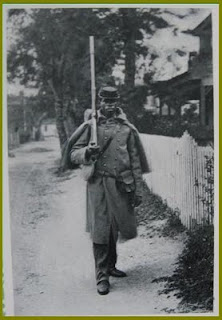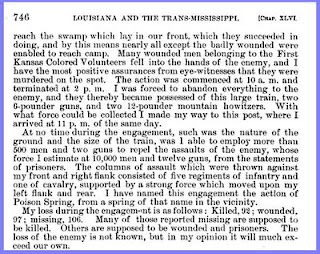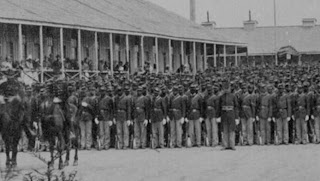When General Frederick Steele sent a large contingent of Union soldiers into the Camden Arkansas area, there were black soldiers among them from the 1st and 2nd Kansas Colored Infantries. After a major military campaign, Steele led the Union forces into southwestern Arkansas. The plan was to join forces with another battalion of Union soldiers to secure northern Louisiana and then move to secure southwestern Arkansas before moving into Texas.
However, the Union Army forces in northern Louisiana had suffered defeat at Confederate hands, now leaving General Steele's Union soldiers less secure than had been planned. In addition, the Union forces were suddenly very low on supplies.
General Frederick Steele
Source: Library of Congress, Civil War Photograph Collection, Photographs Division
Earlier in the month, Steel had occupied the area around Camden Arkansas, but his forces had lost many men at Poison Springs, and at an incident at Mark's Mill. Steele had to turn his forces back towards Little Rock. After a heavy rain had fallen, Steele's troops were crossing the flooded waters of the Saline River, when suddenly they were attacked, and the battle had begun. |
The confederate leader, Edmund Smith had launched the attack, and the battle began in knee deep waters. Although the Union forces were able to hold off the attack long enough to cross the swollen river, they were not able to secure the area, and had to retreat back northward towards Little Rock. The battle was fought with many injuries to both sides.
Illustration depicting the Battle of Jenkins Ferry
The ambulance corps from the 2nd Kansas Colored had been ordered to collect some of the wounded, when they too were ambushed. Many died and many were injured in the process. Steele eventually got most of his forces across the river and ordered his men to destroy the pontoon bridge. From the Union Army over 700 men were killed or reported missing, and it is said that close to 1000 men from the confederate army also died.
It is said that at this battle of Jenkins Ferry, men from the Kansas Colored were motivated by their battle cry, "Remember Poison Springs" and that some engaged in revenge killing of the enemy retaliating for their comrades killed at Poison Springs.
The south was successful in controlling the area, forcing a retreat of Union soldiers back towards Little Rock. However, the forces under the control on Gen. Steele were still intact including the men of the Kansas Colored, and they would meet the enemy again in Arkansas, and later Indian Territory later the same year.
I share this story on this day, in honor of my ancestor John Talkington, who was injured at Jenkins Ferry.
In Memory of John Tuckington (Talkington), my ancestor, wounded at Jenkins Ferry























